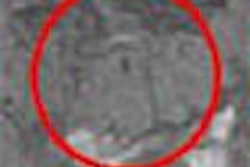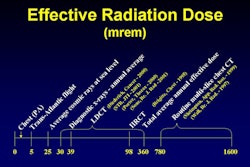MIAMI BEACH, FL - Interventional radiologists at the International Symposium on Endovascular Therapy are touting CT angiography (CTA) as a sufficient stand-alone modality for evaluating patients for abdominal aortic aneurysm (AAA) therapy.
"Digital subtraction angiography at our institution has been mostly replaced in the preoperative workup of abdominal aortic aneurysms by CTA," said Dr. Bart Dolmatch in a presentation Wednesday. "Catheter-based angiography should be reserved for specific indications since it is expensive, uncomfortable, has associate risk, and is woefully two-dimensional." Dolmatch is a professor of radiology-vascular interventional at the University of Texas Southwestern Medical Center in Dallas.
Dolmatch pointed out several advantages of CTA, such as its ability to evaluate the extent of disease. In addition, he said, "patients like it. It takes about 10 minutes, whereas with angiography the patients are dissatisfied (because they) often have to lie around and wait for hours."
Dolmatch cited research at his institution on 22 patients who underwent end-graft placement for repair of their aneurysms. In 13 cases doctors relied solely on CTA; in nine cases doctors relied on CTA and angiography studies. The results were virtually identical, he said.
Moreover, the results compare favorably with other studies that show a high degree of sensitivity or specificity for the ability of CTA to detect stenosis in renal arteries, as well as in blockages of the celiac, mesenteric, and iliofemoral systems.
"The power of CTA for assessing abdominal aorta aneurysms lies in its ability to generate a volumetric dataset of high spatial resolution," Dolmatch said. "Off-axis and curved planar reconstructions are easily created and used to determine aortic and iliac lengths and diameters. Identification of renal arteries and internal iliac arteries is routine, and, in fact, stenosis can be quantified. Furthermore, a variety of vascular diagnoses can be made from the CT images that could otherwise be overlooked by catheter angiography."
Dr. John Kaufman, professor of interventional radiology at the Oregon Health Sciences University in Portland, seconded Dolmatch’s opinion. Kaufman suggested that angiography be reserved for patients with particularly complex anatomy, or in patients who are being considered for preoperative embolization of certain arteries.
By Edward SusmanAuntMinnie.com contributing writer
January 22, 2003
Multislice spiral computed tomography improves CAD diagnosis, October 10, 2002
Quick ultrasound screening for AAA recommended in older men, September 27, 2002
CT scans help differentiate syndrome X and coronary artery disease, December 17, 2001
Radiologists and surgeons join forces to treat aortic aneurysms, February 27, 2001
Copyright © 2003 AuntMinnie.com




















